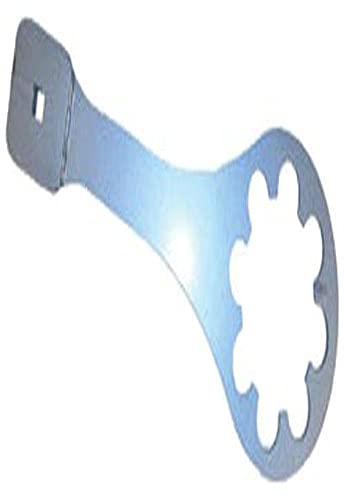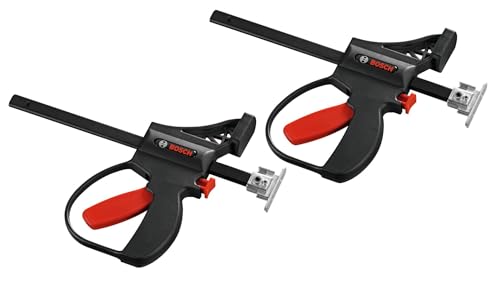
A plunge saw and a circular saw are both popular power tools used in woodworking and construction projects. While they share some similarities, they are not the same tool. Each has its own unique features and functions that set them apart.
A circular saw is a versatile tool that is widely used in the construction industry. It has a circular blade that rotates at high speeds, allowing it to cut through various materials, including wood, metal, and plastic. The blade is mounted on a base plate, which can be adjusted to achieve different cutting depths and angles. Circular saws are commonly handheld and are used for making straight cuts and bevel cuts.
On the other hand, a plunge saw, also known as a track saw, is specifically designed for precision cutting. It features a retractable blade that can be plunged into the material, allowing for clean and accurate cuts. Unlike a circular saw, a plunge saw is mounted on a track or guide rail, which provides stability and ensures straight cuts. This makes it ideal for tasks that require precise and splinter-free cuts, such as making furniture, cabinets, and flooring.
In summary, while both a plunge saw and a circular saw are cutting tools, they have different designs and functions. A circular saw is more versatile and suitable for general cutting tasks, while a plunge saw is specifically designed for precision and accuracy. Choosing the right tool depends on the specific requirements of your project and the type of cuts you need to make.
Key differences between plunge saws and circular saws
Plunge saws and circular saws are two popular power tools commonly used in woodworking and construction projects. While they may appear similar at first glance, there are several key differences between the two. Understanding these differences can help you choose the right tool for your specific needs.
Blade Housing
One of the main differences between plunge saws and circular saws lies in their blade housing mechanism. Plunge saws have a retractable blade that can be lowered into the material, allowing for precise and accurate cuts. Circular saws, on the other hand, have a fixed blade housed in a guarded enclosure. This difference makes plunge saws more suitable for plunge cutting and creating clean, precise cuts.
Cutting Depth
The cutting depth is another significant difference between plunge saws and circular saws. Plunge saws are designed to cut through materials at various depths. The depth can be adjusted according to the specific requirements of the project. On the contrary, circular saws have a fixed cutting depth, which is determined by the size of the blade. This limitation may make circular saws less versatile when it comes to cutting different materials at various depths.
Accuracy and Precision
When it comes to accuracy and precision, plunge saws have an advantage over circular saws. The retractable blade and the ability to make plunge cuts allow for more controlled and precise cuts, especially when working with delicate or expensive materials. Circular saws, although powerful, may not offer the same level of accuracy and precision as plunge saws.
Summary:
| Plunge Saws | Circular Saws |
|---|---|
| Retractable blade | Fixed blade |
| Adjustable cutting depth | Fixed cutting depth |
| More accuracy and precision | Less accuracy and precision |
While both plunge saws and circular saws have their own advantages and drawbacks, choosing the right tool ultimately depends on the specific requirements of your project. Consider factors such as the type of material, desired cutting depth, and the level of precision needed to make an informed decision.
Advantages of using a plunge saw over a circular saw
Plunge saws and circular saws are both powerful cutting tools, but there are several advantages to using a plunge saw over a traditional circular saw. Here are some key benefits:
- Precision and accuracy: One of the main advantages of a plunge saw is its ability to provide precise and accurate cuts. The plunge mechanism allows the blade to be lowered into the material, resulting in cleaner and more accurate cuts. This is especially useful when working with delicate or expensive materials.
- Clean cuts: Plunge saws are known for their ability to produce clean and splinter-free cuts. The plunging action helps to prevent tear-out, particularly when cutting across the grain or working with laminated materials. This makes plunge saws an excellent choice for tasks that require a high level of finishing.
- Safe operation: Plunge saws often come with safety features that enhance their usability and protect the operator. These may include blade guards, anti-kickback mechanisms, and depth stoppers. This makes plunge saws a safer option, especially for novice users who are less experienced with circular saws.
- Versatility: Plunge saws are highly versatile tools that can be used for various cutting tasks. They are suitable for making straight cuts, bevel cuts, and plunge cuts. Additionally, many plunge saws have the ability to connect to guide rails, allowing for accurate and consistent cutting over longer distances.
- Dust extraction: Many plunge saws are equipped with dust extraction systems that help to keep the work area clean. This is particularly important when working in indoor environments where dust and debris can be hazardous to health. The ability to effectively remove dust also improves visibility and reduces the risk of accidents.
In conclusion, while circular saws have their place in the workshop, plunge saws offer several advantages that make them a popular choice for many professionals and DIY enthusiasts. Their precision, clean cuts, safety features, versatility, and dust extraction capabilities make plunge saws a valuable tool for a wide range of applications.
When to use a plunge saw and when to use a circular saw
Both plunge saws and circular saws are powerful cutting tools that can be used for various woodworking and construction tasks. While they may seem similar, there are certain situations where one tool is better suited than the other.
| Plunge Saw | Circular Saw |
|---|---|
| When making precise and clean cuts, especially for plunge cutting | When cutting through large pieces of material or making long straight cuts |
| When cutting materials at an angle or bevel | When making quick and rough cuts |
| When working with delicate or expensive materials that require minimal tear-out | When cutting materials that don’t require as much precision |
| When working on projects that require a depth stop or cutting to a certain depth | When cutting materials that don’t require precise depth control |
| When making plunge cuts into materials such as plywood or particle board | When making rip cuts or crosscuts in solid wood or other dense materials |
Ultimately, the choice between a plunge saw and a circular saw depends on the specific application and the level of precision required. Both tools have their own advantages and disadvantages, making them suitable for different types of cuts. Having both tools in your arsenal can provide you with the versatility needed to tackle a wide range of woodworking and construction projects.
How to Choose Between a Plunge Saw and a Circular Saw
When it comes to choosing the right saw for your woodworking needs, it’s essential to consider the specific tasks you’ll be performing and the features each type of saw offers. Two popular options for cutting wood are the plunge saw and the circular saw. While they may seem similar, there are some key differences that can affect your decision. This guide aims to help you choose between a plunge saw and a circular saw based on your requirements and preferences.
Plunge Saw
A plunge saw, also known as a track saw or rail saw, is designed for precision cutting. It features a fixed base that rides along a guide rail, allowing you to make straight, accurate cuts. One of the advantages of a plunge saw is its ability to start cuts in the middle of the material, rather than just at the edge.
When choosing a plunge saw, consider the following factors:
| Factor | Description |
|---|---|
| Cutting Depth | Check the maximum cutting depth of the saw to ensure it meets your needs. |
| Power and Speed Control | Look for a plunge saw with sufficient power and speed control options for different materials and tasks. |
| Compatible Guide Rail | Make sure the plunge saw you choose is compatible with a guide rail system for precise cuts. |
Circular Saw
A circular saw is a versatile and widely used tool for cutting various materials, not just wood. It features a round rotating blade that cuts through the material. Circular saws are commonly used for rough cutting, cross-cutting, and ripping.
Consider the following factors when choosing a circular saw:
| Factor | Description |
|---|---|
| Blade Size | Check the blade size to determine the maximum cutting depth and the type of materials it can handle. |
| Bevel Capacity | Look for a circular saw with adjustable bevel capacity if you need to make angled cuts. |
| Power and Speed | Consider the power and speed of the circular saw based on the materials you’ll be cutting. |
Ultimately, the choice between a plunge saw and a circular saw depends on the type of cuts you’ll be making and the level of precision you require. If you need precise, clean cuts and the ability to start in the middle of the material, a plunge saw is the better option. On the other hand, if you require versatility and the ability to handle various cutting tasks, a circular saw may be more suitable.
It’s also worth considering that some woodworkers may opt to have both types of saws in their workshop, as they each have their own strengths and can complement each other for different projects. Assess your specific needs, budget, and available space to make an informed decision.






